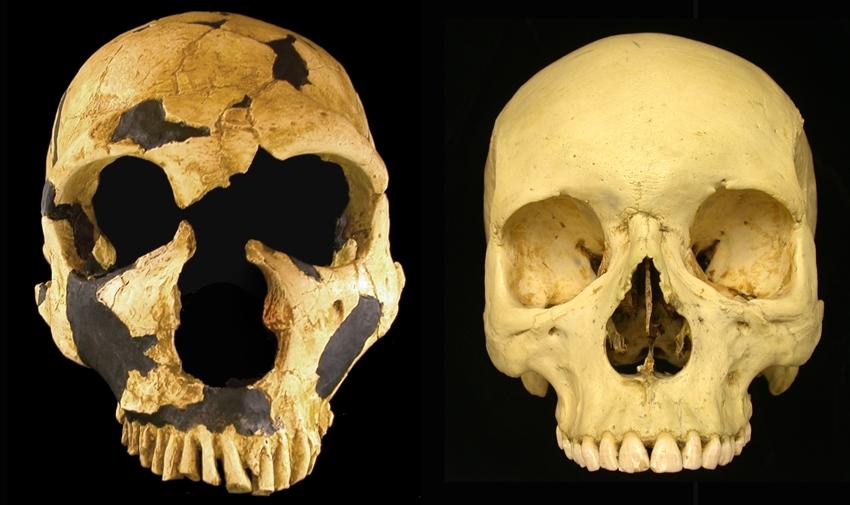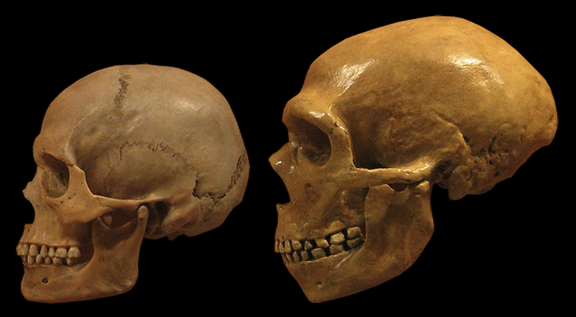
© Nathan HoltonComparison of a Neanderthal skull (left) with that of a Homo sapiens.
A pair of researchers at Temple University has found evidence that suggests Neanderthals mated and produced offspring with anatomically modern humans multiple times-not just once, as has been suggested by prior research. In their paper published in the journal
Nature Ecology and Evolution, Fernando Villanea and Joshua Schraiber describe
their genetic analysis of East Asian and European people and how they compared to people from other places. Fabrizio Mafessoni with the Max Planck Institute for Evolutionary Anthropology offers a News and Views piece on the work done by the pair in the same journal issue.
In recent years, scientists have discovered that early humans moving out of Africa encountered Neanderthals living in parts of what is now Europe and Eastern Asia. In comparing Neanderthal DNA with
modern humans, researchers have found that there was a least one pairing that led to offspring, which is reflected in the DNA of humans-
approximately 2 percent of the DNA in non-African humans today is Neanderthal. In this new effort, the researchers have found evidence that suggests there was more than one such encounter.

© DrMikeBaxter/WikipediaComparison of Modern Human and Neanderthal skulls from the Cleveland Museum of Natural History.
In this new effort, the researchers took a more stringent look to find out once and for all if there had been multiple pairings or just one. They pulled and
analyzed data from the 1000 Genomes Project, measuring the amount of Neanderthal DNA in genetic material from volunteers. The first step was separating the data between people of European and Asian ancestry. Doing so suggested that both groups had evidence of early multiple mating events. The researchers then studied the rates of the two groups by creating simulations showing outcomes of differing numbers of mating events between the two groups. Data from the simulations was then fed into a machine-learning algorithm that showed DNA percentage patterns based on the number of cross-breeding events that had occurred.
The researchers concluded that the most likely scenario was that there were multiple instances of cross-breeding between early humans in both East Asia and Europe with Neanderthals.
Explore further: Modern humans inherited viral defenses from Neanderthals
More information: Fabrizio Mafessoni. Encounters with archaic hominins, Nature Ecology & Evolution (2018). DOI: 10.1038/s41559-018-0729-6
Fernando A. Villanea et al. Multiple episodes of interbreeding between Neanderthal and modern humans, Nature Ecology & Evolution (2018). DOI: 10.1038/s41559-018-0735-8
Journal reference: Nature Ecology & Evolution





Comment: Recent studies show that humans also interbred with Denisovans as well as an unknown species.
See also: